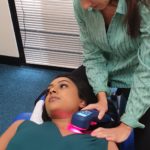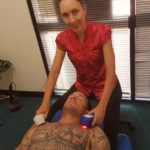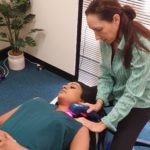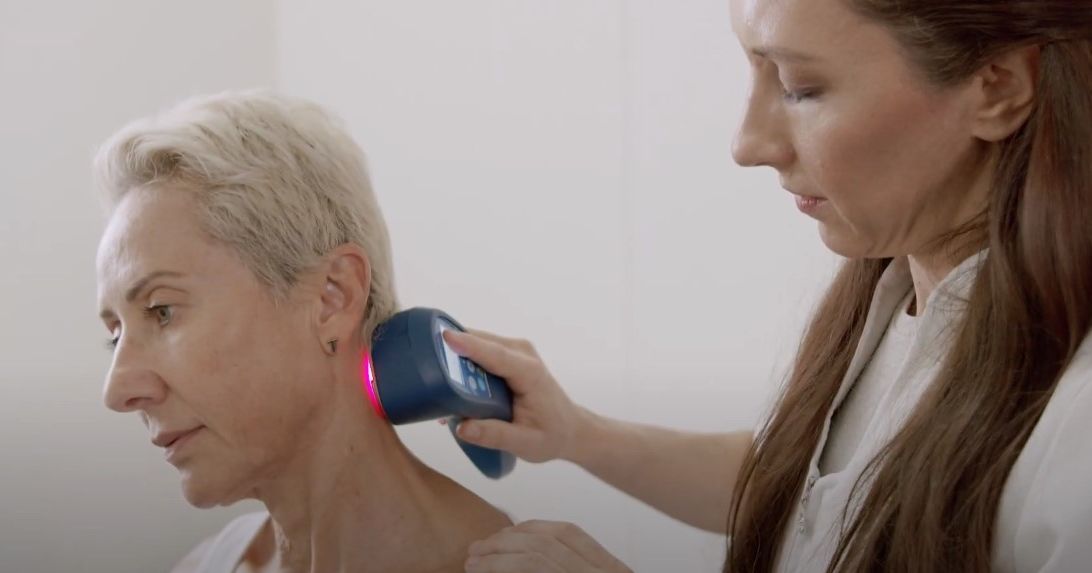Thoracic outlet syndrome is a condition that occurs when blood vessels or nerves in the space between your collar bone and first rib are compressed. This generally produces numbness in your fingers and pain in your shoulders and neck. Patients usually present with diffuse arm symptoms including tingling sensations down the inside of the arm to the little and ring fingers. This involves either the brachial plexus, subclavian or axillary artery. The passage for where these nerve plexus’s and arteries exit is the thoracic outlet (exists the chest to supply the upper extremities). Aggravation of the disorder is generally due to overhead activities.
What causes the compression within the thoracic outlet resulting in Pins and needles in hand?
a) Tight muscles around your neck and chest area- Scalenes muscles, Pectoralis minor, Subclavius muscle
b) An extra neck/cervical rib
c) Trauma to the area of your neck
d) RARE tumours at the top of the lungs
e) Weight gain
f) Poor posture As the thoracic outlet is surrounded by bone, muscle and soft tissue, any condition that cause movement of these structures into the thoracic outlet will produce symptoms.
What are the exact symptoms you may experience?
a) Swelling, puffy arms or hands
b) Feeling of heaviness in your arm or hands
c) Deep, toothache like pain in your neck or shoulders
d) Increasing symptoms at night
e) Cramps of muscles in the middle aspect of your forearm
f) Hands or arms easily fatigue
g) Pins and needles middle forearm or palm of hand
h) Difficulty gripping
i) Arm and hand pain
Who is at risk of experiencing Thoracic Outlet Syndrome?
a) Occupations with heavy usage of upper extremities- construction work or a hairdresser for example
b) Weight lifting
c) Pregnancy
d) Obesity
e) Poor posture such as in front of a computer Any activities/ positions that cause impingement (squashing) to the thoracic outlet. In order to diagnosis a patient with thoracic outlet syndrome there are some tests that need to come up positive.
For all tests, a positive sign is the disappearance of the radial pulse and reproduction of arm symptoms and weakness.
Theses involve:
a) The Roos test- patient flexes and abducts arms to 90 degrees and repeatedly grip and release their hands for up to a minute
b) Adson’s test- patient stands with forearm supinated down their side and looks towards forearm while doctor palpates radial pulse
c) Hallstead’s test- same as the Adson’s test except head is rotated away from the side of involvement
d) Wrights test- unilateral arm is supinated flexed and abducted to 90 degrees and head is rotated away while the doctor again palpates the radial pulse
Treatment for thoracic outlet syndrome can include cervical adjustments, trigger point therapy, stretching of tight muscles, strengthening of middle and lower trapezius and cold laser therapy also known as low-level laser therapy.Cold laser therapy can treat thoracic outlet syndrome by irradiating the brachial plexus starting at the cervical facets/dorsal root ganglia and move along the scalenes and then to the first rib area and finish inferior to the clavicle/pectoral minor.
Cold laser/low level therapy protocol For the treatment of thoracic outlet syndrome using the cold laser therapy (low-level laser therapy) there are two protocols that it follows. The first being the pain protocol and the second being the tissue repair protocol. For the pain phase the laser is placed over the cervical facets for 4 minutes and moved inferiorly along the scalenes for again 4 minutes at different intervals. This phase is used to inhibit pain and associated myospasm and 2-3 weekly visits are recommended.
The tissue repair phase involves 2 minutes on each spot as mentioned above and requires 1-2 treatments per week with the amount of sessions totalling 10-12. So if you’re noticing any of the symptoms as mentioned above or have been told by a professional that you have thoracic outlet syndrome, Lakeside Laser is perfect in the treatment of your condition.
Lakeside Laser has access to multiple laser emitters to deliver efficient, targeted treatment—helping you recover as quickly as possible. Conveniently located in Gnangara, WA 6077—just minutes from Joondalup—we welcome clients from across Perth’s northern suburbs, including Sinagra, Hocking, Ocean Reef, Mullaloo, Padbury, Burns Beach, Craigie, Currambine, Iluka, Beldon, Hillarys, Woodvale, and Tapping.
We have HICAPS facilities onsite, so you can claim directly from your health fund on the day of treatment. We accept Medibank, HBF, Bupa, CU Health, NIB, Police Health Fund, GMF, SGIO, and many more—if your fund isn’t listed, feel free to ask.
To schedule an appointment, contact our trained staff on 0468 429 111 or book online at www.lakesidelaser.com.au. We look forward to assisting you and treating your condition as effectively and promptly as possible.






